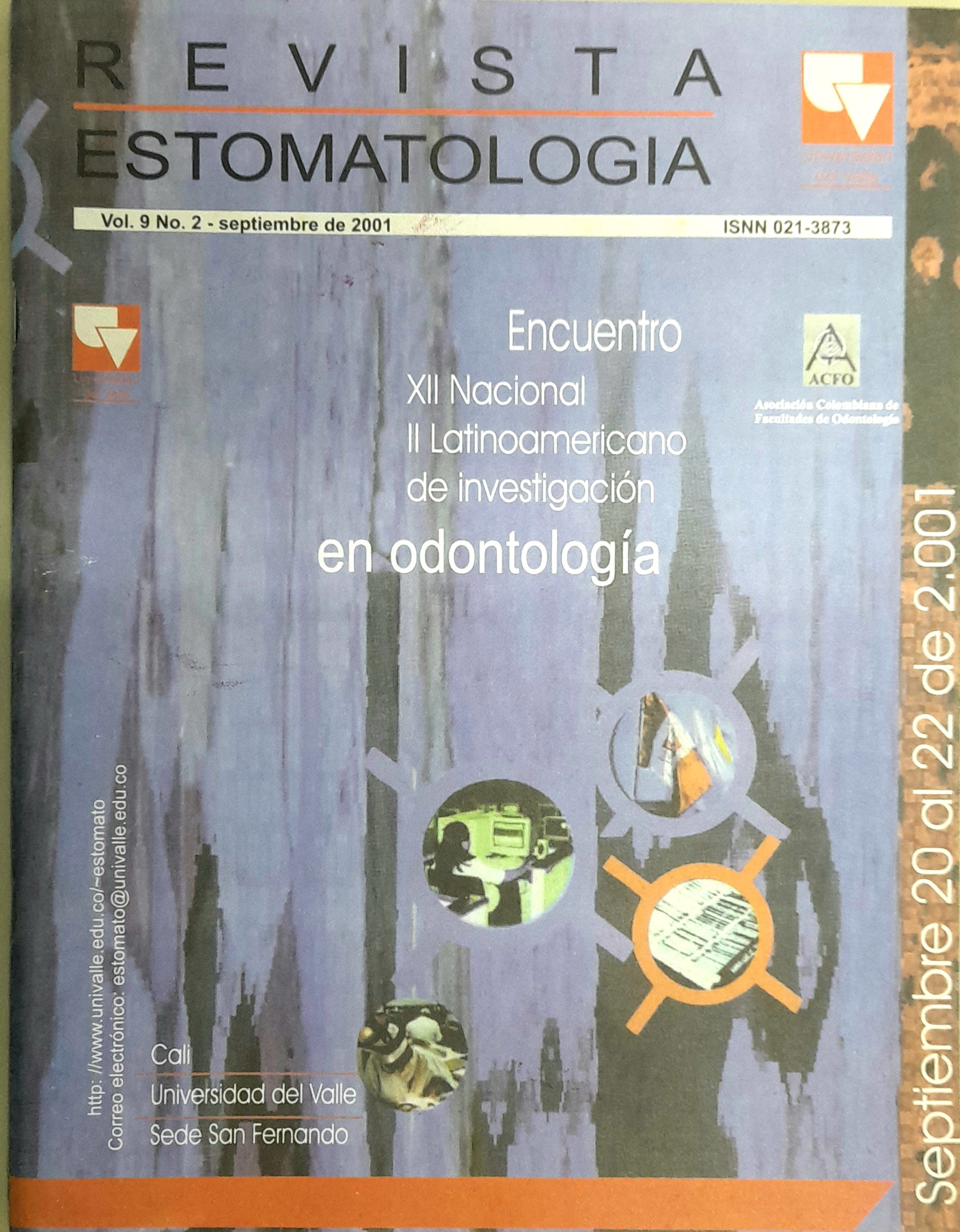Contaminación in vitro de cepillos dentales
Main Article Content
This study determined that toothbrushes could maintain viable and perhaps transmit to other farnily member 3 important oral pathogens. The toothbrushes were infected with an approximate inoculum of 5 million bacteria' s per mI of Actinobacillus actinomycetemcomitans, and Enterobacter cloacae, respectively and an infective dose 50 (ID 50) of Herpes Simplex type 1, (HSV -1). These microorganisms were placed directly on the tooth bristles at room temperature and subcultured at different times to establish individual microbial survival rates. Microorganisms were cultured at 3 hours, 24 hours, 96 hours, 5 days, 12 days, and 16 days after the initial toothbrush inoculation. A. actinomycetemcomitans, and HSV -1 resulted viable after 72 hours on toothbrushes. E. cloacae was viable as far as 16 days after the initial inoculation. The microbial viability was determined by subculture in TSBV and the identity of the microorganisms established by the bacterial colony morphology, rapid biochemical tests, and specie-specific polymerase chain reaction for A. actinomycetemcomitans. Viral viability was determined by visualization of the viral induced cytopathic effect on a cultured monolayer of embryonic lung fibroblasts from replicating HSV -l. Positive cultures were confmned by IFA assay against HSV -1. In conc1usion this study demonstrated in vitro that toothbrushes could act as a reservoir of microbes and maybe transmit important oral pathogens.
- Adolfo Contreras, Actualidades en microbiología: origen y evolución de la microbiología , Revista Estomatología: Vol. 2 No. 1 (1992)
- Adolfo Contreras, What should be the real purpose of research? Is it to develop the human well beign or on the contrary is a power element to dominate others that do not have proper knowledge? , Revista Estomatología: Vol. 20 No. 1 (2012)
- , Editorial , Revista Estomatología: Vol. 19 No. 2 (2011)
- Adolfo Contreras R., Beatriz Parra P., Sensibilidad de fibroblastos gingivales humanos a la infección por herpes simple tipo I (in vitro) , Revista Estomatología: Vol. 4 No. 1 (1994)
- , Editorial , Revista Estomatología: Vol. 19 No. 1 (2011)

This work is licensed under a Creative Commons Attribution-NonCommercial-NoDerivatives 4.0 International License.
Los autores/as conservan los derechos de autor y ceden a la revista el derecho de la primera publicación, con el trabajo registrado con la licencia de atribución de Creative Commons, que permite a terceros utilizar lo publicado siempre que mencionen la autoría del trabajo y a la primera publicación en esta revista.





